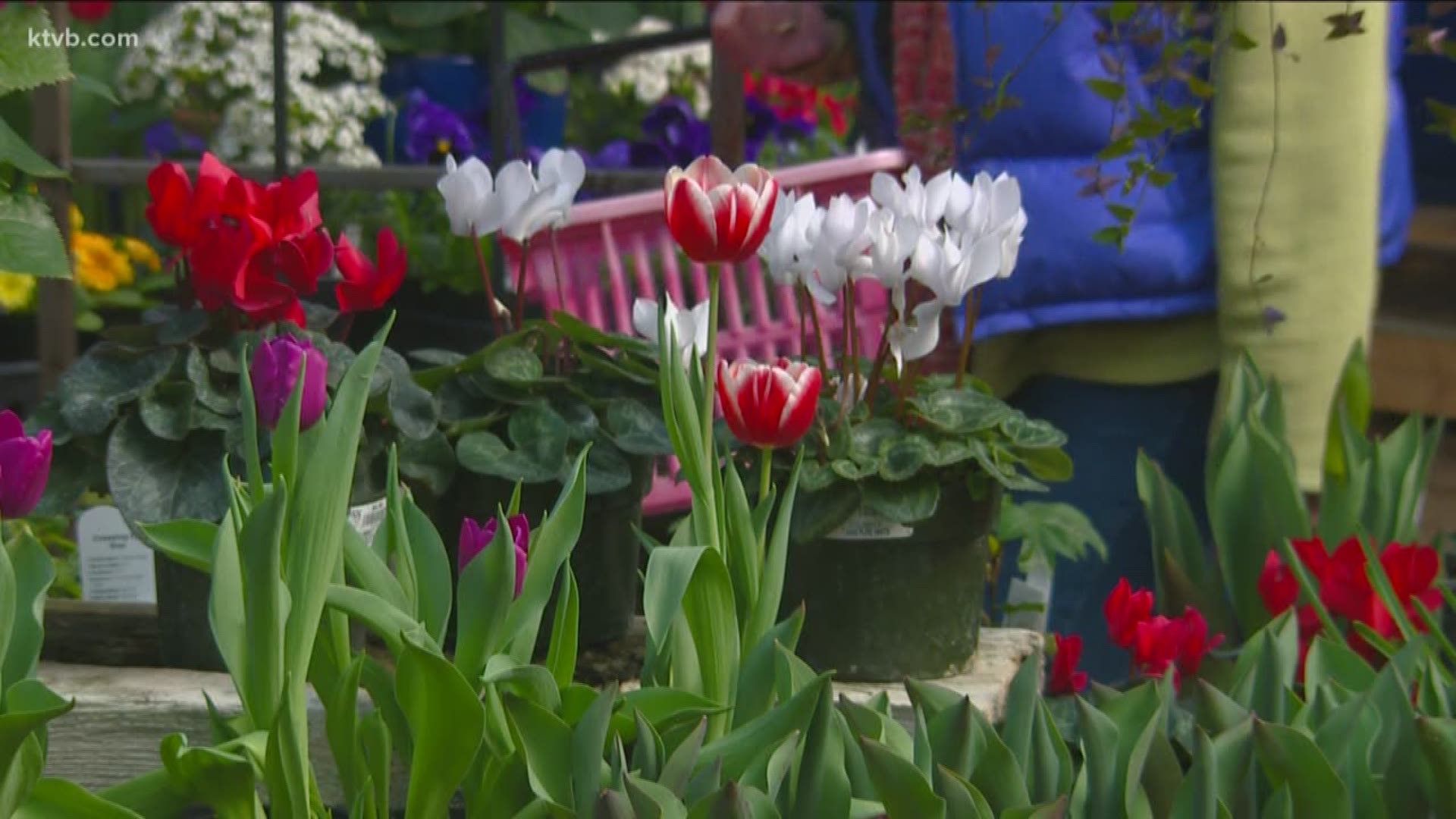BOISE, Idaho — Now that spring is officially here, aren’t you anxious to fill your yard with beautiful bright blooming flowers? Some colorful blossoms are already showing up around the valley, but others will have to wait until spring really settles in for good.
Garden master Jim Duthie shows us some of these first flowers of the season, and gives us a closer look at primroses, which you can plant right now for a big splash of early spring color in your home landscape.
Tired of the lifeless grays and browns of winter? Well, spring has finally arrived. The grass is greening up, trees and shrubs are starting to blossom, and the earliest flowers of spring are popping up with their bright colors. But if it’s not happening fast enough for you, there are lots of gorgeous, colorful flowers that you can plant right now to brighten up your home landscape. They’ll do just fine, even when our early spring weather continues to bring a few cold days.
Local garden centers already have displays of the bright, eye-catching flowers that we love so much after a long winter. Daffodils, tulips, crocuses and hyacinths are some of the earliest flowers of spring.
Most of them grow from bulbs, so you should have planted them last fall. But if you didn’t, you can buy a container of forced blooms to enjoy right now, and I’ll show you what they’ll look like so you can include them in your landscape for next year.
These showy flowers will start to emerge even through the snowy, freezing weather of late winter, just waiting for the first mild, sunny days to arrive when they can pop open.
Daffodils are a really cheery flower. The most common daffodils are bright yellow, but there are white daffodils, and even two-toned daffodils of white and yellow or orange. They grow from bulbs that should be planted in the fall, but you can force-bloom them indoors in containers.
Hyacinths also bloom from bulbs, and come in a variety of colors. Giant hyacinths produce a large spike that’s densely covered with clusters of lily-shaped tiny flowers. Smaller grape-hyacinths are only a few inches high with much smaller flower heads, and they bloom very early in the spring.
Crocuses are small and dainty looking, but they’re very hardy in the cold days of late winter and early spring, coming up even through a blanket of snow. Crocuses grow from corms, which resemble small bulbs, but are actually the swollen ends of the stems just below ground. A bed of crocuses will provide a showy blanket of colorful little blossoms.
If you didn’t plant any bulbs last fall, and you want a quick splash of brilliant color now, primroses are your best bet. The name comes from prima rosa, which literally means first rose, although they aren’t really a rose. Planted in containers, they’ll provide a welcoming splash of color with a show-stopping display of vivid pinks, yellows, reds, violets and blues, as well as multi-colored blossoms, set against a backdrop of evergreen leaves.
This variety of primrose is the vulgaris, and it’s a perennial. They’re widely available right now at garden centers and even in the grocery stores, and they’re really quite inexpensive, about two or three dollars each. They’re easy to grow and are very hardy and adaptable. They’re even edible, although I’ve never tried eating them. They make great bedding and border plants, especially along a shady walkway under the trees.
I like to plant my primroses in a large container, using some fine organic soil that will provide good drainage. Plant them four to six inches deep and about six to 12 inches apart, giving them plenty of room to grow, since they can spread up to a foot wide. Water them in well, and then just keep the soil moist after that. They’ll do best where it’s cool, so shady or partly sunny locations are ideal.
Primroses will continue to bloom throughout the spring, and even in the summer in cooler climates. But as the hot weather arrives here in Idaho, they will start to fade. You can keep them looking their best with regular pruning of any dead leaves and spent blooms. In flower beds, they’ll over-winter and will come back to bloom again the next spring.
Primroses can also be grown indoors as a houseplant. Give them bright indirect light away from the heat, and keep the soil moist. Once the flowers fade, plant your primrose outside.
You’ll find all kinds of beautiful spring flowers on display and for sale this weekend at the Boise Flower and Garden Show, Friday through Sunday at the Boise Centre.
Watch more 'You Can Grow It':
See them all on our YouTube playlist here:

